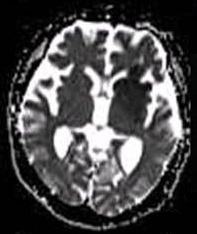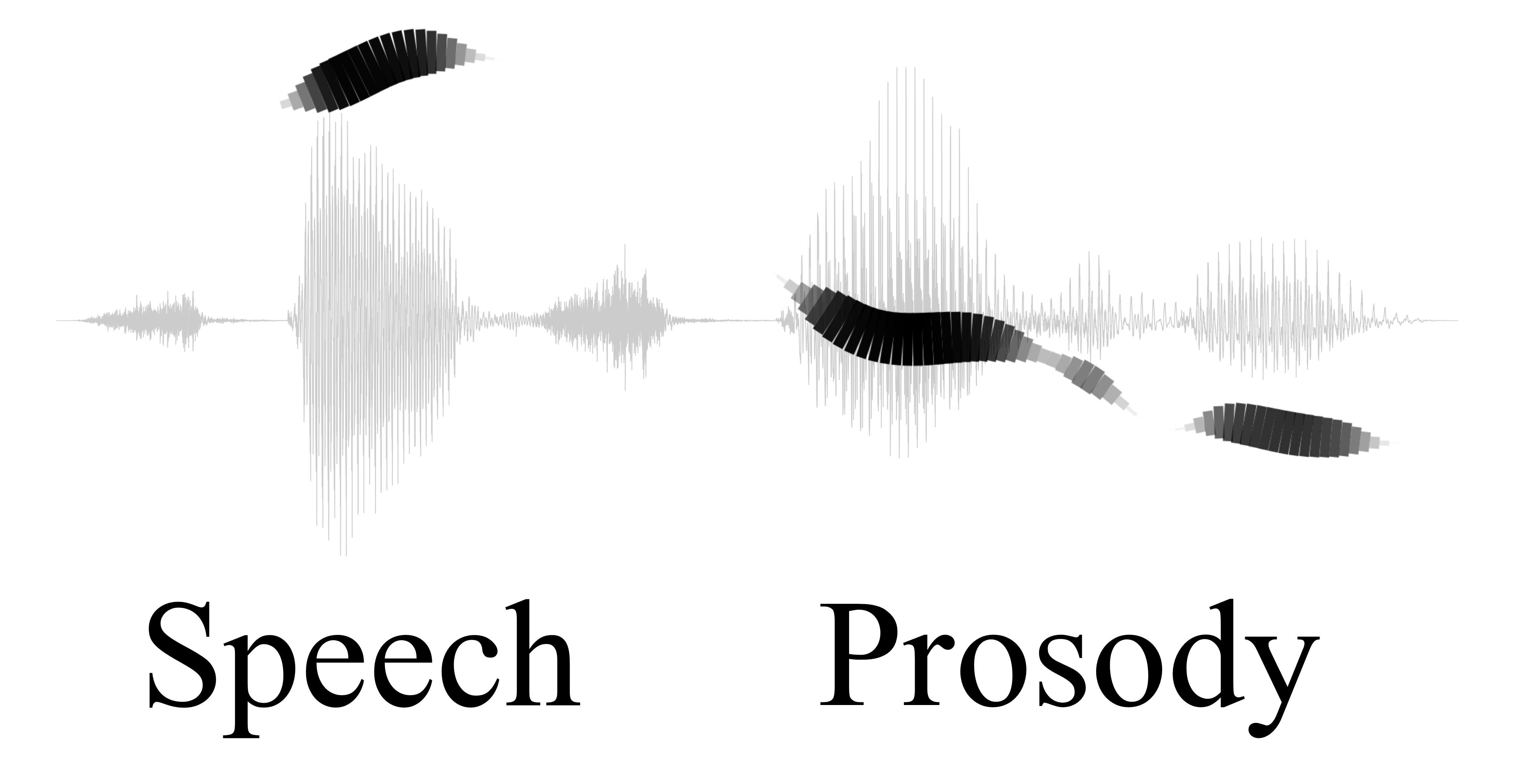|
Arcuate Fasciculus
In neuroanatomy, the arcuate fasciculus (AF; ) is a bundle of axons that generally connects Broca's area and Wernicke's area in the brain. It is an association fiber tract connecting caudal temporal lobe and inferior frontal lobe. Structure The arcuate fasciculus is a white matter tract that runs parallel to the superior longitudinal fasciculus. Due to their proximity, they are sometimes referred to interchangeably. They can be distinguished by the location and function of their endpoints in the frontal cortex. The arcuate fasciculus terminates in Broca's area (specifically BA 44) which is linked to processing complex syntax. However, the superior longitudinal fasciculus ends in the premotor cortex which is implicated in acoustic-motor mapping. Connection Historically, the arcuate fasciculus has been understood to connect two important areas for language use: Broca's area in the inferior frontal gyrus and Wernicke's area in the posterior superior temporal gyrus. It is mo ... [...More Info...] [...Related Items...] OR: [Wikipedia] [Google] [Baidu] |
Broca's Area
Broca's area, or the Broca area (, also , ), is a region in the frontal lobe of the dominant Cerebral hemisphere, hemisphere, usually the left, of the Human brain, brain with functions linked to speech production. Language processing in the brain, Language processing has been linked to Broca's area since Pierre Paul Broca reported impairments in two patients. They had lost the ability to speak after injury to the posterior inferior frontal gyrus (pars triangularis) (BA45) of the brain. Since then, the approximate region he identified has become known as Broca's area, and the deficit in language production as Broca's aphasia, also called expressive aphasia. Broca's area is now typically defined in terms of the pars opercularis and pars triangularis of the inferior frontal gyrus, represented in Korbinian Brodmann, Brodmann's Brodmann area, cytoarchitectonic map as Brodmann area 44 and Brodmann area 45 of the dominant hemisphere. Functional magnetic resonance imaging (fMRI) has show ... [...More Info...] [...Related Items...] OR: [Wikipedia] [Google] [Baidu] |
Diffusion MRI
Diffusion-weighted magnetic resonance imaging (DWI or DW-MRI) is the use of specific MRI sequences as well as software that generates images from the resulting data that uses the diffusion of water molecules to generate contrast (vision), contrast in MR images. It allows the mapping of the diffusion process of molecules, mainly water, in biological tissues, in vivo and non-invasively. Molecular diffusion in tissues is not random, but reflects interactions with many obstacles, such as macromolecules, fibers, and Biological membrane, membranes. Water molecule diffusion patterns can therefore reveal microscopic details about tissue architecture, either normal or in a diseased state. A special kind of DWI, diffusion tensor imaging (DTI), has been used extensively to map white matter tractography in the brain. Introduction In diffusion weighted imaging (DWI), the intensity of each image element (voxel) reflects the best estimate of the rate of water diffusion at that location. Because ... [...More Info...] [...Related Items...] OR: [Wikipedia] [Google] [Baidu] |
Phonemic Paraphasia
Paraphasia is a type of language output error commonly associated with aphasia and characterized by the production of unintended syllables, words, or phrases during the effort to speak. Paraphasic errors are most common in patients with fluent forms of aphasia, and come in three forms: phonemic or literal, neologistic, and verbal. Paraphasias can affect metrical information, segmental information, number of syllables, or both. Some paraphasias preserve the meter without segmentation, and some do the opposite. However, most paraphasias partially have both affects. The term was apparently introduced in 1877 by the German-English physician Julius Althaus in his book on ''Diseases of the Nervous System'', in a sentence reading, "In some cases there is a perfect chorea or delirium of words, which may be called ''paraphasia''". Causes Paraphasia is associated with fluent aphasias, characterized by "fluent spontaneous speech, long grammatically shaped sentences and preserved prosody ... [...More Info...] [...Related Items...] OR: [Wikipedia] [Google] [Baidu] |
Aphasia
Aphasia, also known as dysphasia, is an impairment in a person's ability to comprehend or formulate language because of dysfunction in specific brain regions. The major causes are stroke and head trauma; prevalence is hard to determine, but aphasia due to stroke is estimated to be 0.1–0.4% in developed countries. Aphasia can also be the result of brain tumors, epilepsy, autoimmune neurological diseases, brain infections, or neurodegenerative diseases (such as dementias). To be diagnosed with aphasia, a person's language must be significantly impaired in one or more of the four aspects of communication. In the case of progressive aphasia, a noticeable decline in language abilities over a short period of time is required. The four aspects of communication include spoken language production, spoken language comprehension, written language production, and written language comprehension. Impairments in any of these aspects can impact functional communication. The difficulties o ... [...More Info...] [...Related Items...] OR: [Wikipedia] [Google] [Baidu] |
Inferior Parietal Lobule
The inferior parietal lobule (subparietal district) lies below the horizontal portion of the intraparietal sulcus, and behind the lower part of the postcentral sulcus. Also known as Geschwind's territory after Norman Geschwind, an American neurologist, who in the early 1960s recognised its importance. It is a part of the parietal lobe. Structure It is divided from rostral to caudal into two gyri: * One, the supramarginal gyrus ( BA 40), arches over the upturned end of the lateral fissure; it is continuous in front with the postcentral gyrus, and behind with the superior temporal gyrus. * The second, the angular gyrus ( BA 39), arches over the posterior end of the superior temporal sulcus, behind which it is continuous with the middle temporal gyrus. In males, the inferior parietal lobule is significantly more voluminous in the left hemisphere compared to the right. This extreme asymmetry is not present in females and this may contribute to cognitive differences between the ... [...More Info...] [...Related Items...] OR: [Wikipedia] [Google] [Baidu] |
Conduction Aphasia
Conduction aphasia, also called associative aphasia, is an uncommon form of aphasia caused by damage to the parietal lobe of the brain. An acquired language disorder, it is characterized by intact auditory comprehension, coherent (yet paraphasic) speech production, but poor speech repetition. Affected people are fully capable of understanding what they are hearing, but fail to encode phonological information for production. This deficit is load-sensitive as the person shows significant difficulty repeating phrases, particularly as the phrases increase in length and complexity and as they stumble over words they are attempting to pronounce.Conduction Aphasia. (n.d.). Retrieved from http://www.asha.org/Glossary/Conduction-Aphasia/ People have frequent errors during spontaneous speech, such as substituting or transposing sounds. They are also aware of their errors and will show significant difficulty correcting them. In 1970, Tim Shallice and Elizabeth Warrington were able to ... [...More Info...] [...Related Items...] OR: [Wikipedia] [Google] [Baidu] |
Prosody (linguistics)
In linguistics, prosody () is the study of elements of speech, including intonation, stress, rhythm and loudness, that occur simultaneously with individual phonetic segments: vowels and consonants. Often, prosody specifically refers to such elements, known as ''suprasegmentals'', when they extend across more than one phonetic segment. Prosody reflects the nuanced emotional features of the speaker or of their utterances: their obvious or underlying emotional state, the form of utterance (statement, question, or command), the presence of irony or sarcasm, certain emphasis on words or morphemes, contrast, focus, and so on. Prosody displays elements of language that are not encoded by grammar, punctuation or choice of vocabulary. Attributes of prosody In the study of prosodic aspects of speech, it is usual to distinguish between auditory measures ( subjective impressions produced in the mind of the listener) and objective measures (physical properties of the sound wave and ... [...More Info...] [...Related Items...] OR: [Wikipedia] [Google] [Baidu] |
Cerebral Hemisphere
The vertebrate cerebrum (brain) is formed by two cerebral hemispheres that are separated by a groove, the longitudinal fissure. The brain can thus be described as being divided into left and right cerebral hemispheres. Each of these hemispheres has an outer layer of grey matter, the cerebral cortex, that is supported by an inner layer of white matter. In eutherian (placental) mammals, the hemispheres are linked by the corpus callosum, a very large bundle of axon, nerve fibers. Smaller commissures, including the anterior commissure, the posterior commissure and the fornix (neuroanatomy), fornix, also join the hemispheres and these are also present in other vertebrates. These commissures transfer information between the two hemispheres to coordinate localized functions. There are three known poles of the cerebral hemispheres: the ''occipital lobe, occipital pole'', the ''frontal lobe, frontal pole'', and the ''temporal lobe, temporal pole''. The central sulcus is a prominent fissu ... [...More Info...] [...Related Items...] OR: [Wikipedia] [Google] [Baidu] |
Syntax
In linguistics, syntax ( ) is the study of how words and morphemes combine to form larger units such as phrases and sentences. Central concerns of syntax include word order, grammatical relations, hierarchical sentence structure (constituency), agreement, the nature of crosslinguistic variation, and the relationship between form and meaning (semantics). Diverse approaches, such as generative grammar and functional grammar, offer unique perspectives on syntax, reflecting its complexity and centrality to understanding human language. Etymology The word ''syntax'' comes from the ancient Greek word , meaning an orderly or systematic arrangement, which consists of (''syn-'', "together" or "alike"), and (''táxis'', "arrangement"). In Hellenistic Greek, this also specifically developed a use referring to the grammatical order of words, with a slightly altered spelling: . The English term, which first appeared in 1548, is partly borrowed from Latin () and Greek, though the L ... [...More Info...] [...Related Items...] OR: [Wikipedia] [Google] [Baidu] |
Sensory Maps
Sensory maps are areas of the brain which responds to sensory stimulation, and are spatially organized according to some feature of the sensory stimulation. In some cases the sensory map is simply a topographic representation of a sensory surface such as the skin, cochlea, or retina. In other cases it represents other stimulus properties resulting from neuronal computation and is generally ordered in a manner that reflects the periphery. An example is the somatosensory map which is a projection of the skin's surface in the brain that arranges the processing of tactile sensation. This type of somatotopic map is the most common, possibly because it allows for physically neighboring areas of the brain to react to physically similar stimuli in the periphery or because it allows for greater motor control. The somatosensory cortex is adjacent to the primary motor cortex which is similarly mapped. Sensory maps may play an important role in facilitating motor responses. Other examples of se ... [...More Info...] [...Related Items...] OR: [Wikipedia] [Google] [Baidu] |
Ventral Stream
The two-streams hypothesis is a model of the neural processing of vision as well as hearing. The hypothesis, given its initial characterisation in a paper by David Milner and Melvyn A. Goodale in 1992, argues that humans possess two distinct visual systems. Recently there seems to be evidence of two distinct auditory systems as well. As visual information exits the occipital lobe, and as sound leaves the phonological network, it follows two main pathways, or "streams". The ventral stream (also known as the "what pathway") leads to the temporal lobe, which is involved with object and visual identification and recognition. The dorsal stream (or, "where pathway") leads to the parietal lobe, which is involved with processing the object's spatial location relative to the viewer and with speech repetition. History Several researchers had proposed similar ideas previously. The authors themselves credit the inspiration of work on blindsight by Weiskrantz, and previous neuroscientif ... [...More Info...] [...Related Items...] OR: [Wikipedia] [Google] [Baidu] |




